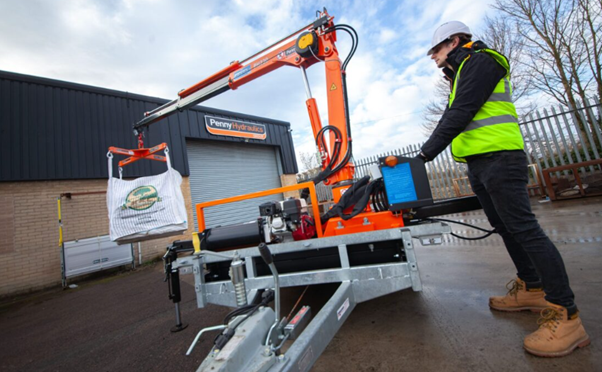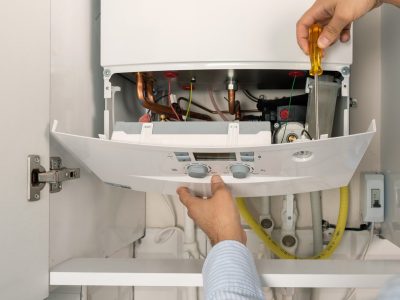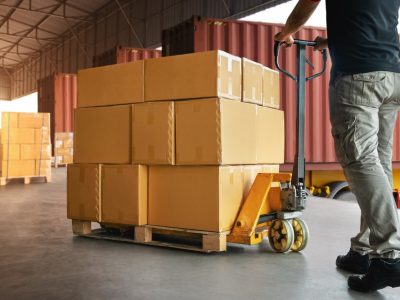In the ever-evolving landscape of heavy-duty operations, where the demands for efficiency, safety, and precision continually escalate, the role of smart industrial lifting solutions has become undeniably pivotal. As industries strive to push the boundaries of productivity and innovation, these advanced lifting technologies are not merely tools but critical enablers that redefine operational capabilities and set new standards for excellence. By seamlessly integrating cutting-edge technologies with robust engineering, smart lifting solutions are revolutionising the way industries handle heavy loads, navigate complex tasks, and optimise their workflows.
The Evolution of Industrial Lifting: From Manual Labour to Smart Solutions
The journey from rudimentary manual labour to sophisticated smart lifting solutions is a testament to human ingenuity and technological advancement. In the not-so-distant past, lifting relied heavily on manual labour and simple mechanical aids, often resulting in inefficiencies, safety hazards, and limited operational scope. Workers were tasked with physically demanding and hazardous lifting jobs, which not only posed significant risks to their health and safety but also constrained productivity and operational efficiency.
With the advent of mechanisation and automation, the landscape began to shift. The introduction of cranes, forklifts, and hoists marked a significant leap forward, enabling industries to handle heavier loads and streamline lifting processes. However, these solutions, while transformative, still required substantial human intervention and lacked the intelligence to adapt to dynamic operational environments.
The real game-changer arrived with the emergence of smart lifting solutions, which harness the power of digital technologies, artificial intelligence, and advanced sensors to elevate lifting operations to unprecedented levels of efficiency and safety. By incorporating real-time data analytics, predictive maintenance, and autonomous functionalities, these smart solutions are redefining the benchmarks for heavy-duty operations.
Enhancing Operational Efficiency Through Automation and Intelligence
At the heart of smart industrial lifting solutions lies a sophisticated blend of automation and intelligence, which collectively drive unparalleled operational efficiency. Unlike traditional lifting equipment, which operates on predefined mechanical principles, smart lifting systems leverage advanced sensors, data analytics, and machine learning algorithms to make informed decisions and optimise lifting processes.
For instance, smart cranes equipped with IoT sensors continuously monitor parameters such as load weight, balance, and environmental conditions. This real-time data is analysed to ensure optimal load distribution, minimise the risk of overload, and adjust lifting strategies dynamically based on changing conditions. Such capabilities not only enhance the precision and safety of lifting operations but also significantly reduce downtime and operational disruptions.
Furthermore, the integration of machine learning algorithms enables these systems to learn from historical data and improve their performance over time. Predictive maintenance, powered by AI, allows for proactive identification of potential equipment failures, thereby minimising unexpected breakdowns and extending the lifespan of lifting machinery. This proactive approach to maintenance ensures that lifting operations remain smooth and uninterrupted, contributing to overall operational efficiency and cost savings.
Revolutionising Safety Standards in Heavy-Duty Operations
Safety has always been a paramount concern in heavy-duty operations, given the inherent risks associated with handling massive loads and operating complex machinery. Traditional lifting methods, despite various safety protocols, often left room for human error and mechanical failures, resulting in accidents and injuries. Smart industrial lifting solutions, with their advanced safety features and autonomous capabilities, are revolutionising safety standards and setting new benchmarks for worker protection and operational reliability.
One of the key safety advantages of smart lifting systems is their ability to perform real-time risk assessments and implement preventive measures autonomously. For example, smart hoists and cranes can detect anomalies such as structural weaknesses, load imbalances, or hazardous environmental conditions, and take corrective actions without requiring human intervention. This capability not only mitigates the risk of accidents but also ensures compliance with stringent safety regulations and standards.
Moreover, the use of augmented reality (AR) and virtual reality (VR) technologies in smart lifting solutions enhances operator training and situational awareness. Through immersive simulations and real-time visualisation, operators can gain a deeper understanding of lifting procedures, potential hazards, and emergency protocols, thereby improving their skills and confidence. This immersive training approach reduces the likelihood of human error and enhances the overall safety culture within industrial environments.
Optimising Workflow and Productivity with Smart Integration
The seamless integration of smart industrial lifting solutions into existing workflows is a critical factor in maximising productivity and operational efficiency. Unlike conventional lifting equipment, which often operates in isolation, smart lifting systems are designed to work harmoniously with other industrial processes and technologies, creating a cohesive and streamlined operational environment.
For instance, smart lifting solutions can be integrated with warehouse management systems (WMS) and enterprise resource planning (ERP) software to optimise inventory management and logistics operations. By synchronising lifting activities with supply chain processes, industries can achieve just-in-time inventory management, reduce lead times, and enhance overall supply chain efficiency. This level of integration ensures that lifting operations are not only efficient but also aligned with broader organisational goals and objectives.
Additionally, the use of collaborative robots, or cobots, in smart lifting solutions enables seamless human-machine collaboration, further enhancing workflow efficiency. Cobots are designed to work alongside human operators, assisting with repetitive or physically demanding lifting tasks while allowing humans to focus on higher-value activities. This collaborative approach not only improves productivity but also enhances job satisfaction and reduces the risk of worker fatigue and injuries.
Conclusion
In conclusion, the advent of smart industrial lifting solutions marks a significant milestone in the evolution of heavy-duty operations, setting new benchmarks for safety, efficiency, and productivity. By harnessing the power of automation, intelligence, and advanced technologies, these solutions are revolutionising the way industries handle heavy loads, optimise workflows, and protect workers. As the industry continues to embrace these innovations and explore emerging trends, the future of lifting promises to be even more transformative, driving further advancements and unlocking new possibilities for excellence in heavy-duty operations.













Comments